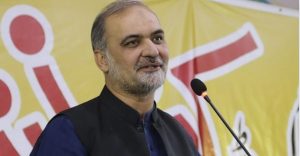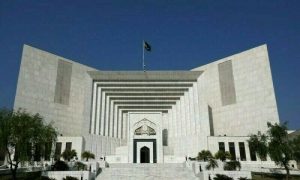
ISLAMABAD: The IMF has approved an immediate disbursal of the final tranche of $1.1 billion to Pakistan as part of the second bailout package.
Pakistan’s intention to receive an additional bailout package to guarantee “permanency in economic stabilization and deepen structural reforms” was also supported by the IMF board. Shortly after Prime Minister Shehbaz Sharif referred to the nation’s debt crisis as a “death trap,” the IMF approved the plan.
Shehbaz made these comments during the World Economic Forum (WEF) closing ceremony in Riyadh, Saudi Arabia. On Sunday, he met with Kristalina Georgieva, the managing director of the IMF, to talk about the next bailout program.
Pakistan was not included in the April 29 calendar that the IMF released on its website. Important roles were played by Finance Secretary Imdad Ullah Bosal, Governor Jameel Ahmad of the State Bank of Pakistan (SBP), and Prime Minister Shehbaz in first securing the deal in June 2023 and then seeing it through to completion.
In the last eight years, the nation has finished two bailout packages. The $6 billion Extended Fund Facility (EEF) was implemented successfully the last time around from 2013 to 2016. However, it was forced to apply for another rescue package in 2019, which was not successful.
Pakistan inked a $3 billion, nine-month Stabilization and Growth Agreement (SBA) in July of last year, which stabilized the economy and reduced the current account deficit. Nonetheless, the budget deficit continued to spiral out of control and is expected to end up being roughly 7.4% of GDP, according to the IMF.
Along with increasing taxes on the salaried class and a sharp increase in the cost of fuel, gas, and electricity, the SBA also significantly increased the burden on the general public. The SBP lost its independence from the IMF and hasn’t been able to cut interest rates even though current and forward-looking inflation estimates have significantly decreased.
With Pakistan’s high poverty rate of 40% and an additional 10 million people on the edge of poverty, it is long overdue that the IMF make room for some economic growth.
“Continue with the timely implementation of power and gas tariff adjustments to keep average tariffs consistent with cost recovery while protecting the vulnerable through the existing progressive tariff structures, thus avoiding any net circular debt accumulation in FY24,” Pakistan had promised the IMF during the staff-level discussions.
Since then, monthly fuel cost adjustments have resulted in a regularly large increase in the price of power. Furthermore, during the nine-month SBA arrangement, the government raised gas rates twice. However, the overall circular debt of the gas and power industries was more than Rs5.7 trillion, or 5.4% of the GDP.
Pakistan pledged to the IMF that by June 2024, it will limit its circular debt to Rs2.310 trillion, or the same amount as the previous year. However the debt flow had already reached Rs2.7 trillion, and the government intended to use a combination of rate hikes and budgeted subsidies to bring the debt down to the agreed-upon amount.
Pakistan had agreed to maintain the primary budget surplus at 0.4% of GDP as part of the $3 billion SBA. However, according to a World Bank analysis released this month, the government would fall short of its key goal of a budget surplus.
Pakistan was unable to draw in enough money to pay down its foreign debt despite the IMF scheme. To maintain the reserves at $8 billion, the central bank was forced to make additional purchases from the market totaling more than $5 billion.
Read More: IMF predicts Pakistan’s economy to grow by 3.5% in FY25
Even though the IMF program was completed, Pakistan’s credit ratings were not raised by foreign credit rating organizations. Foreign private lenders shied away from Pakistan due to the country’s extremely dangerous credit ratings.
Pakistan’s financial and economic standing had improved in the months after the initial review, according to the IMF. It further stated that the nation’s growth and confidence were still improving as a result of careful policy management and the start of inflows from both bilateral and multilateral partners.
The administration set an inflation target of 21% and a GDP growth objective of 3.5% for the current fiscal year. According to the most recent IMF report, Pakistan’s GDP may expand by 2% while its inflation rate would remain close to 25%.
The nation did well in lowering the current account deficit, which even continued to be better than the IMF’s projections, which was the single area of success under the IMF agreement. Since exports have not significantly improved, this was accomplished by limiting imports. Throughout the program time, there was continued pressure on the remittances.
Pakistan has already expressed an interest in a successor medium-term EEF program to permanently resolve the country’s fiscal and external sustainability weaknesses, strengthening its economic recovery as well as laying the foundations for strong, sustainable, and inclusive growth.








